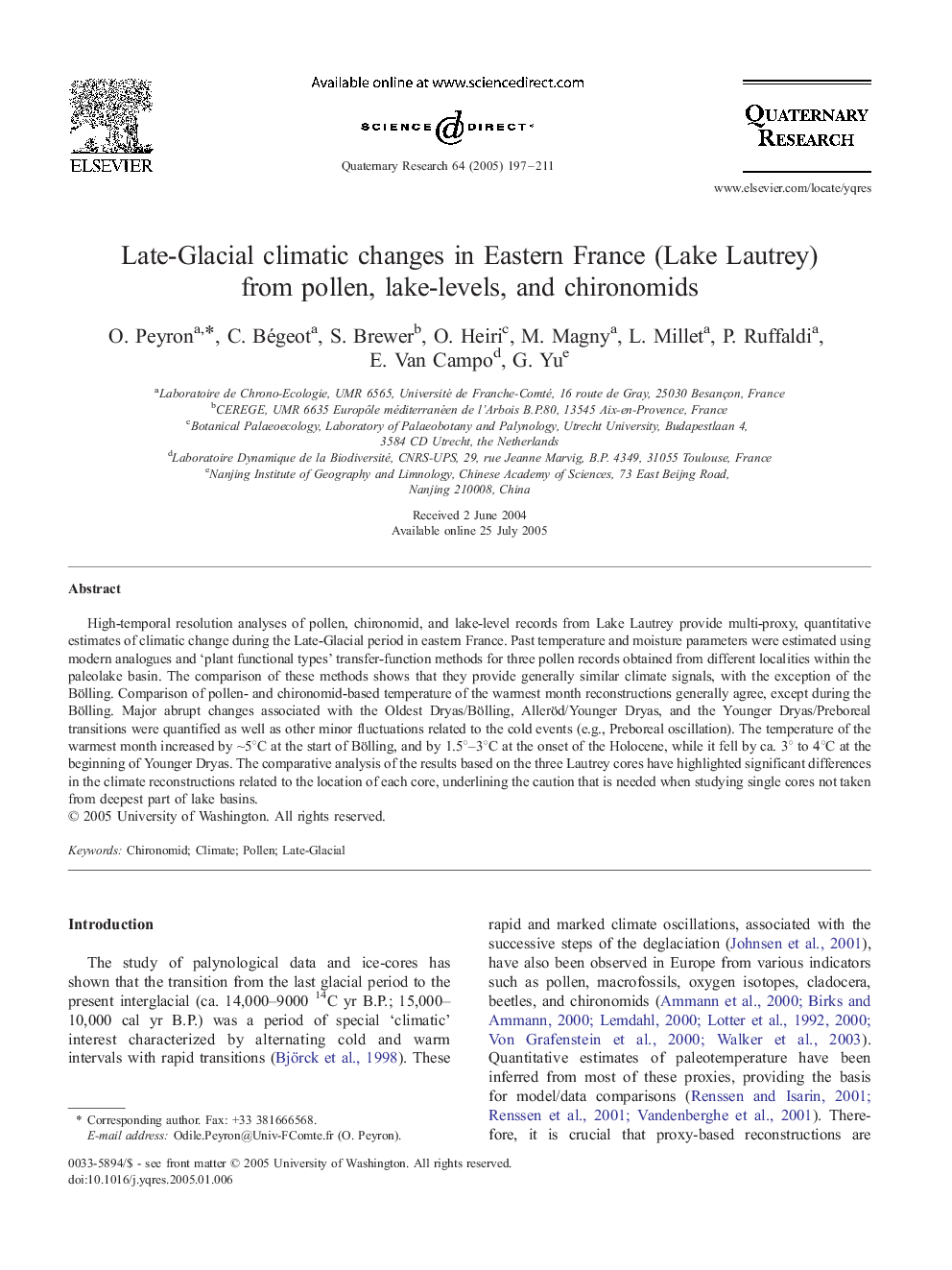| Article ID | Journal | Published Year | Pages | File Type |
|---|---|---|---|---|
| 10501329 | Quaternary Research | 2005 | 15 Pages |
Abstract
High-temporal resolution analyses of pollen, chironomid, and lake-level records from Lake Lautrey provide multi-proxy, quantitative estimates of climatic change during the Late-Glacial period in eastern France. Past temperature and moisture parameters were estimated using modern analogues and 'plant functional types' transfer-function methods for three pollen records obtained from different localities within the paleolake basin. The comparison of these methods shows that they provide generally similar climate signals, with the exception of the Bölling. Comparison of pollen- and chironomid-based temperature of the warmest month reconstructions generally agree, except during the Bölling. Major abrupt changes associated with the Oldest Dryas/Bölling, Alleröd/Younger Dryas, and the Younger Dryas/Preboreal transitions were quantified as well as other minor fluctuations related to the cold events (e.g., Preboreal oscillation). The temperature of the warmest month increased by â¼5°C at the start of Bölling, and by 1.5°-3°C at the onset of the Holocene, while it fell by ca. 3° to 4°C at the beginning of Younger Dryas. The comparative analysis of the results based on the three Lautrey cores have highlighted significant differences in the climate reconstructions related to the location of each core, underlining the caution that is needed when studying single cores not taken from deepest part of lake basins.
Keywords
Related Topics
Physical Sciences and Engineering
Earth and Planetary Sciences
Geology
Authors
O. Peyron, C. Bégeot, S. Brewer, O. Heiri, M. Magny, L. Millet, P. Ruffaldi, E. Van Campo, G. Yu,
